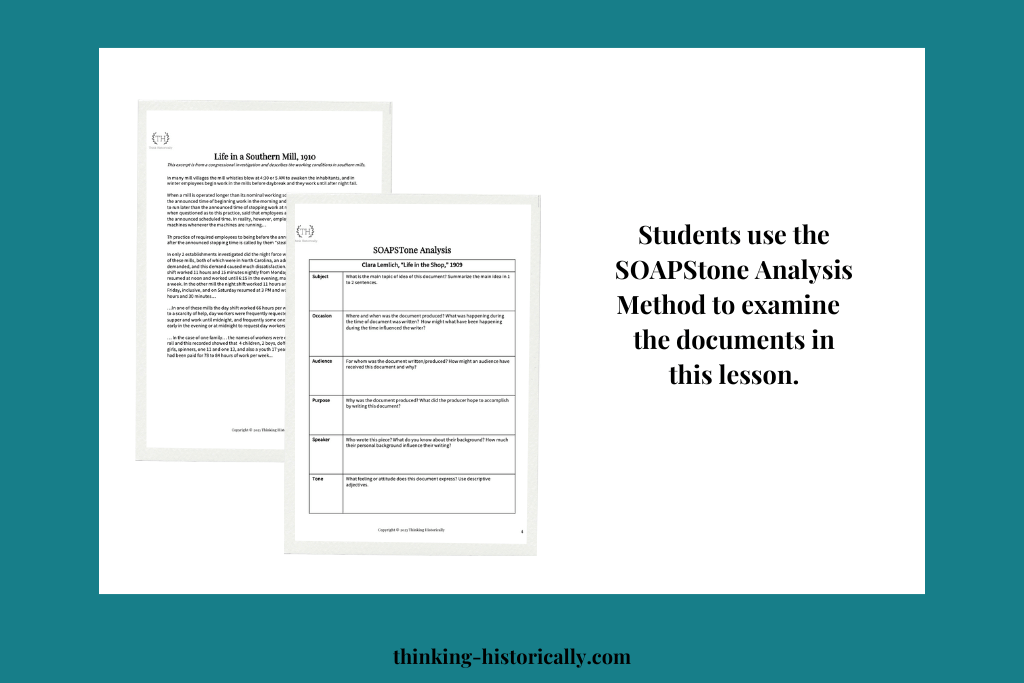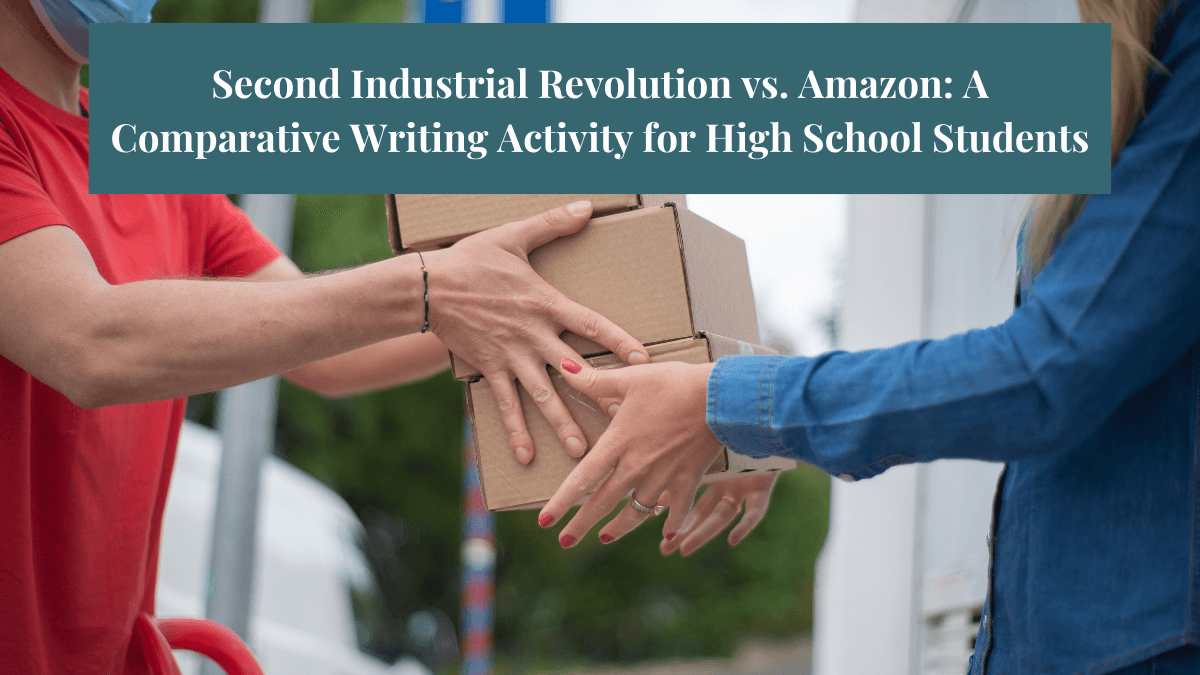The Second Industrial Revolution was a transformative era, marked by advanced technologies that reshaped how people lived and worked. This period saw a massive migration to cities, driven by the need to be closer to growing factories. In this blog, I’ll introduce you to my Second Industrial Revolution Writing Activity, designed to help students explore and understand the impact of working conditions during this time.
I enjoy this activity because students compare the working conditions during the Second Industrial Revolution with current-day Amazon workers. If you’re interested, you can purchase this resource here! It includes complete lesson plan procedures and ready-to-use student materials.
Now, let’s dive into the lesson!
Document Analysis
In this activity, students analyze three documents:
- Clara Lemlich – Life in the Shop (1909)
- Life in a Southern Mill (1910)
- Amazon Cited by Labor Department for Exposing Warehouse Workers to Safety Hazards (2023)
Students use the SOAPStone Analysis Method to examine these documents. This method helps students identify the subject, occasion, audience, purpose, speaker, and tone. You can have students work individually or in pairs to analyze each document, allocating about 20-25 minutes for this task.

After the analysis, review the documents as a class. Encourage students to share their responses and discuss their findings.
Working Conditions Comparison
Next, have students compare working conditions during the Second Industrial Revolution with current day Amazon workers by responding to the following prompts:
- How were working conditions during the Second Industrial Revolution similar to current-day Amazon workers?
- How were working conditions during the Second Industrial Revolution different than current-day Amazon workers?
- What surprises you about any similarities or differences between working conditions then and now? Why?
I really enjoy this activity because it’s quick and easy to set up and it gets students thinking critically about whether we’ve made progress as a society. If you’re interested in purchasing this Second Industrial Revolution Working Conditions Analysis Activity, you can find it here.

If you’d like to read about another Second Industrial Revolution lesson I’ve created, check out my post here.
Happy teaching!


